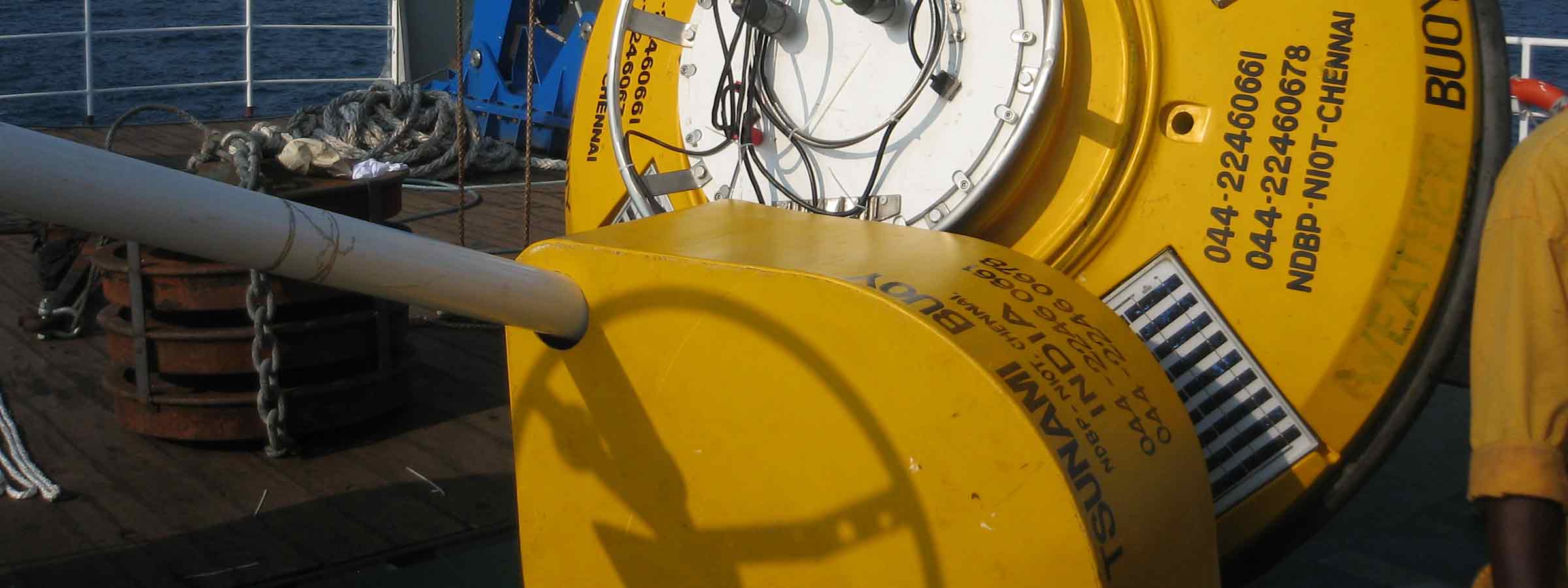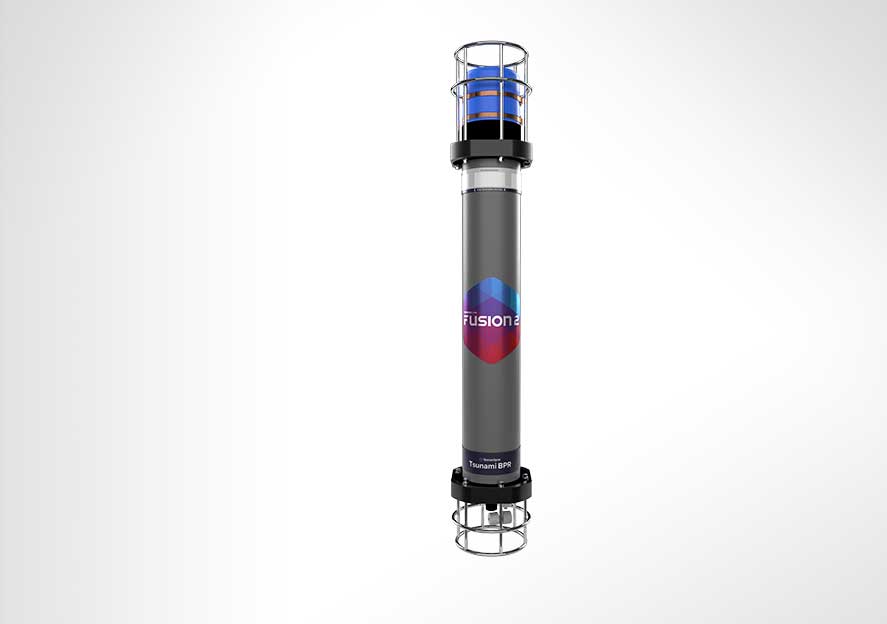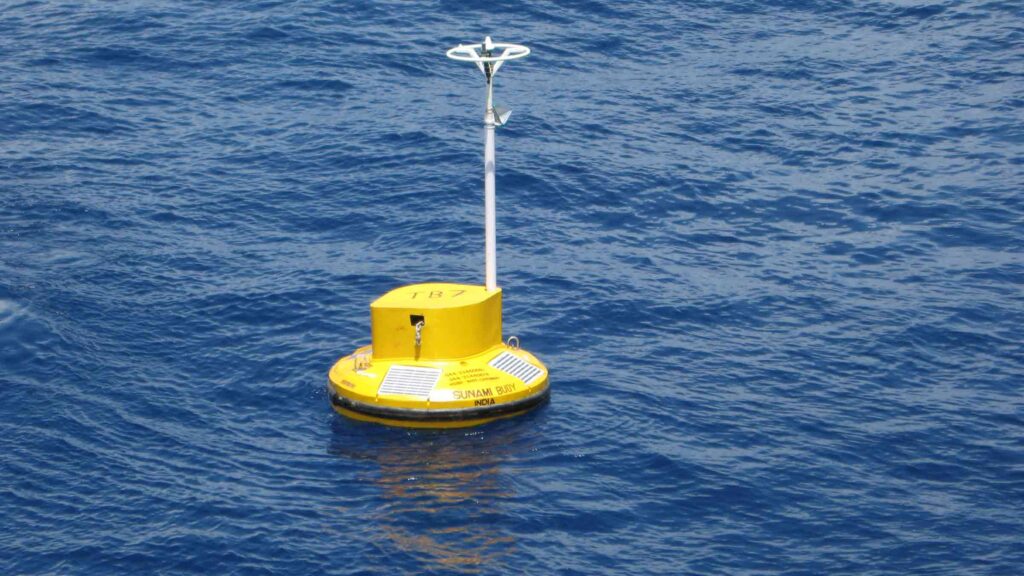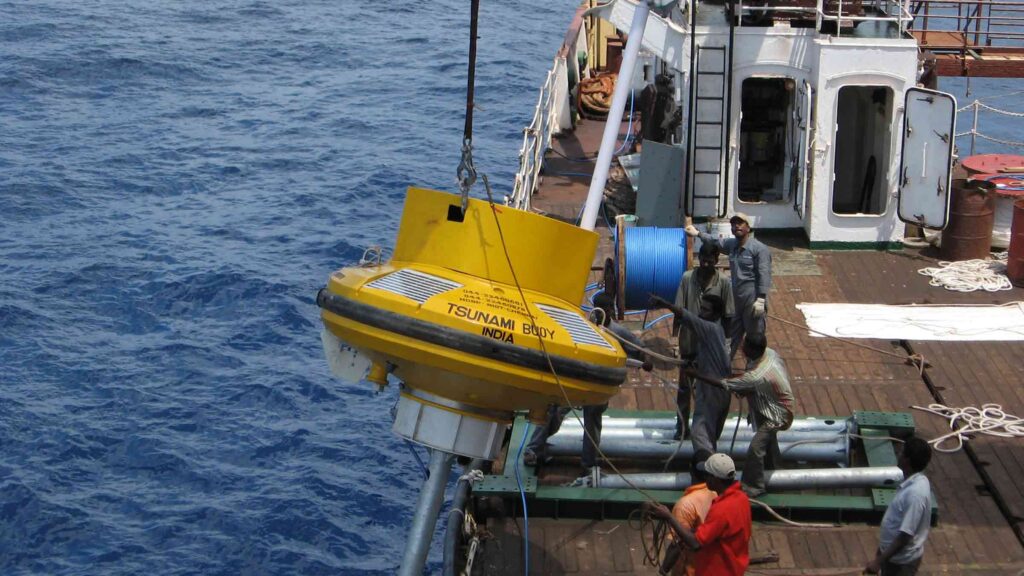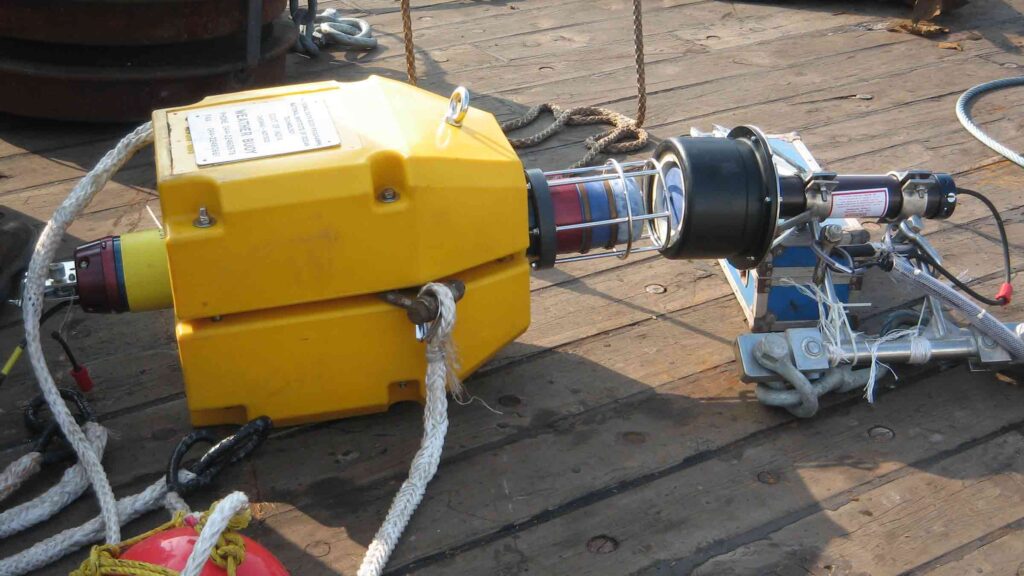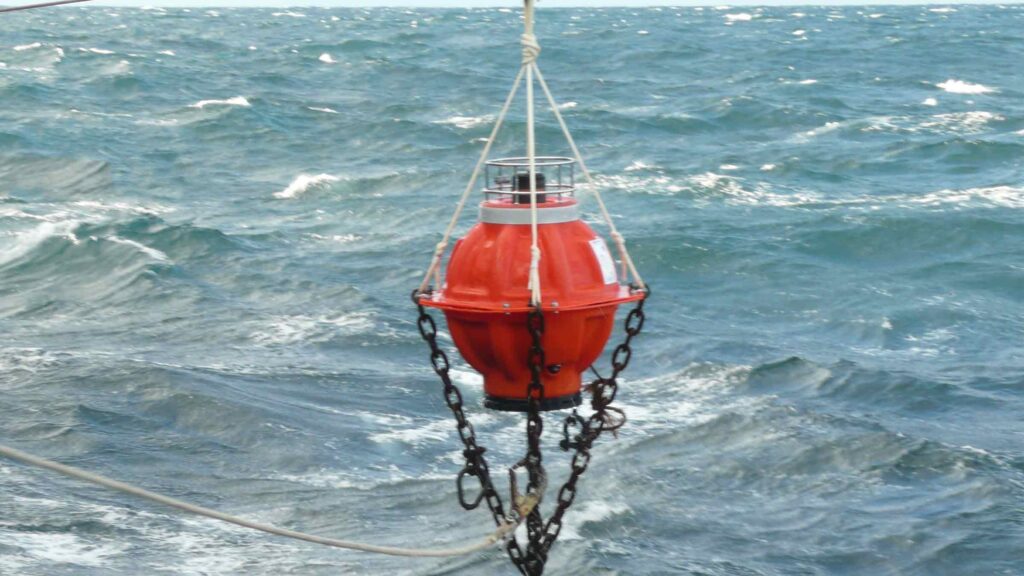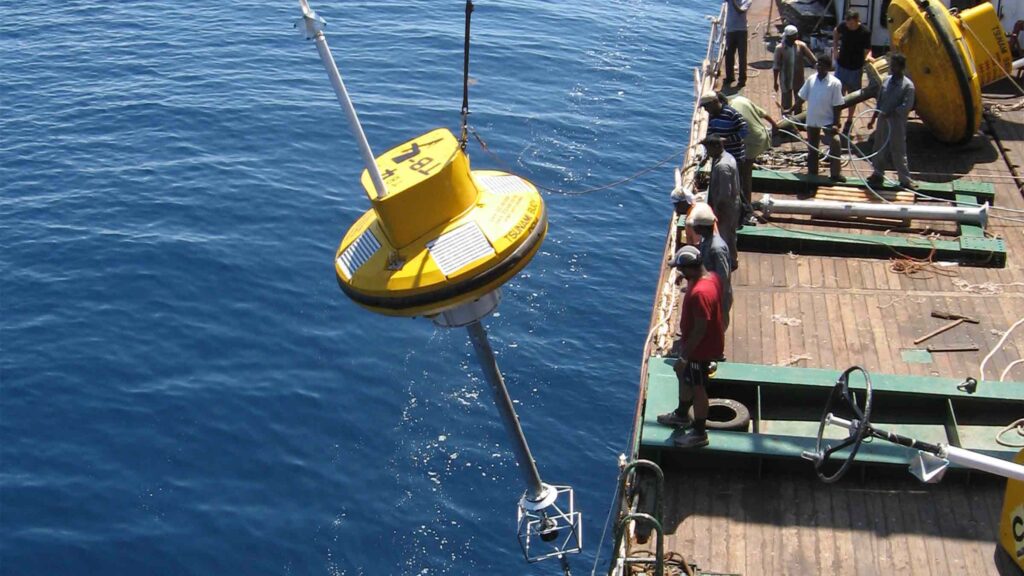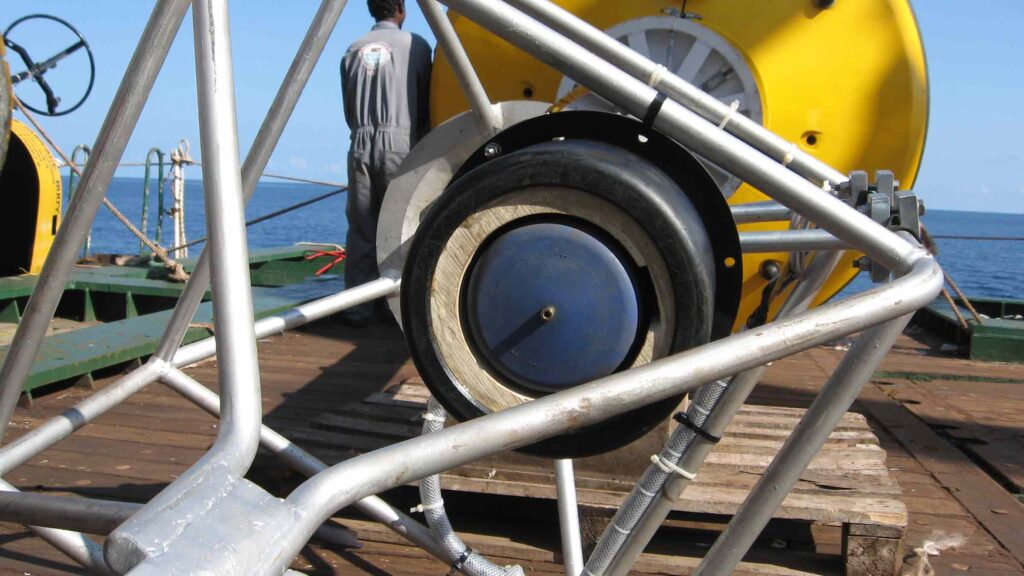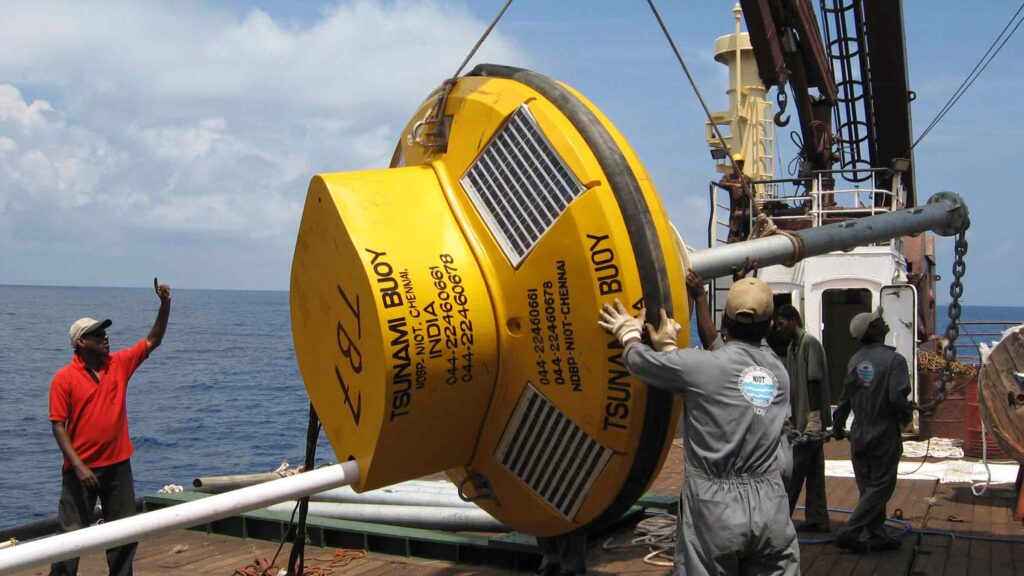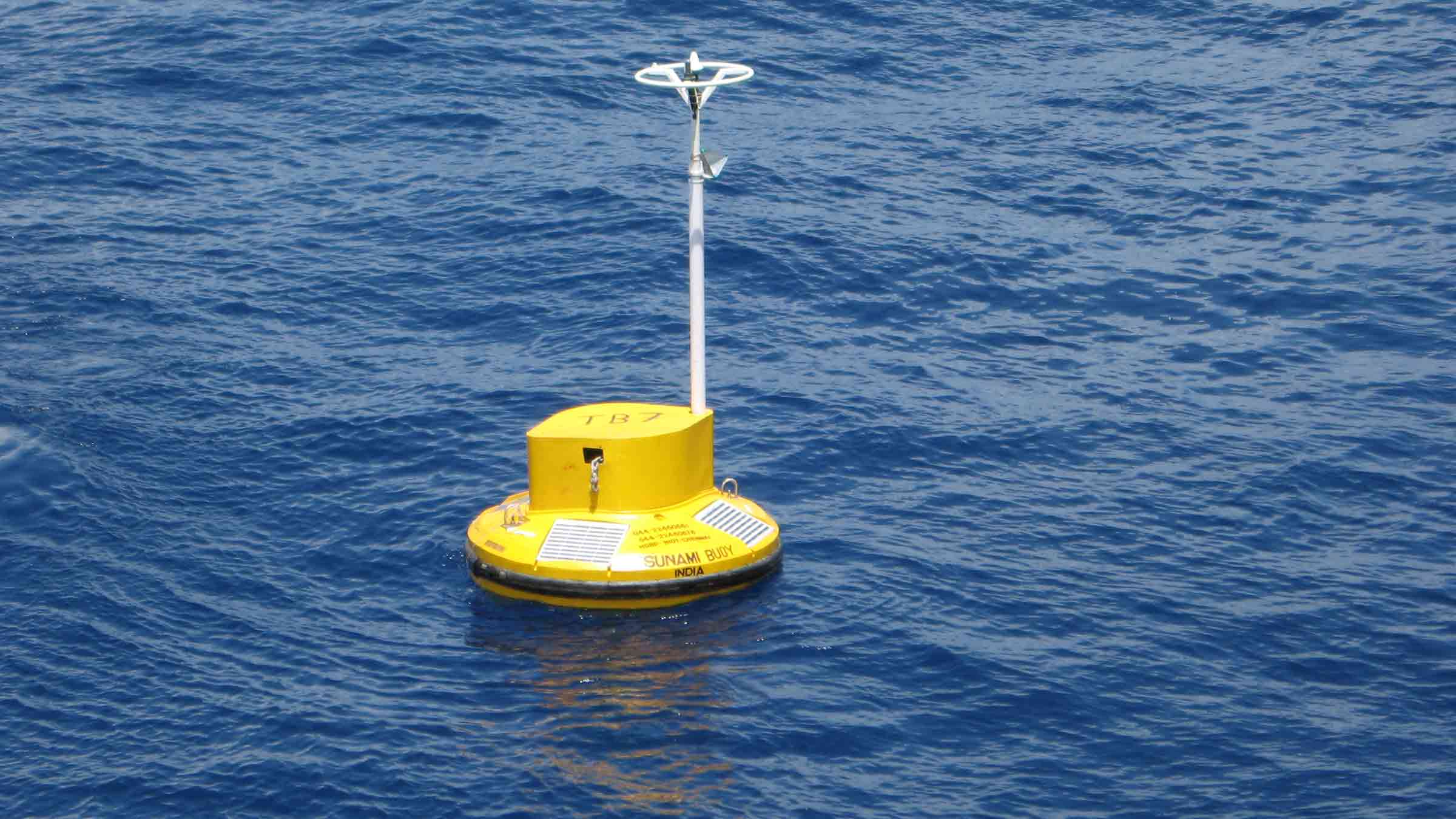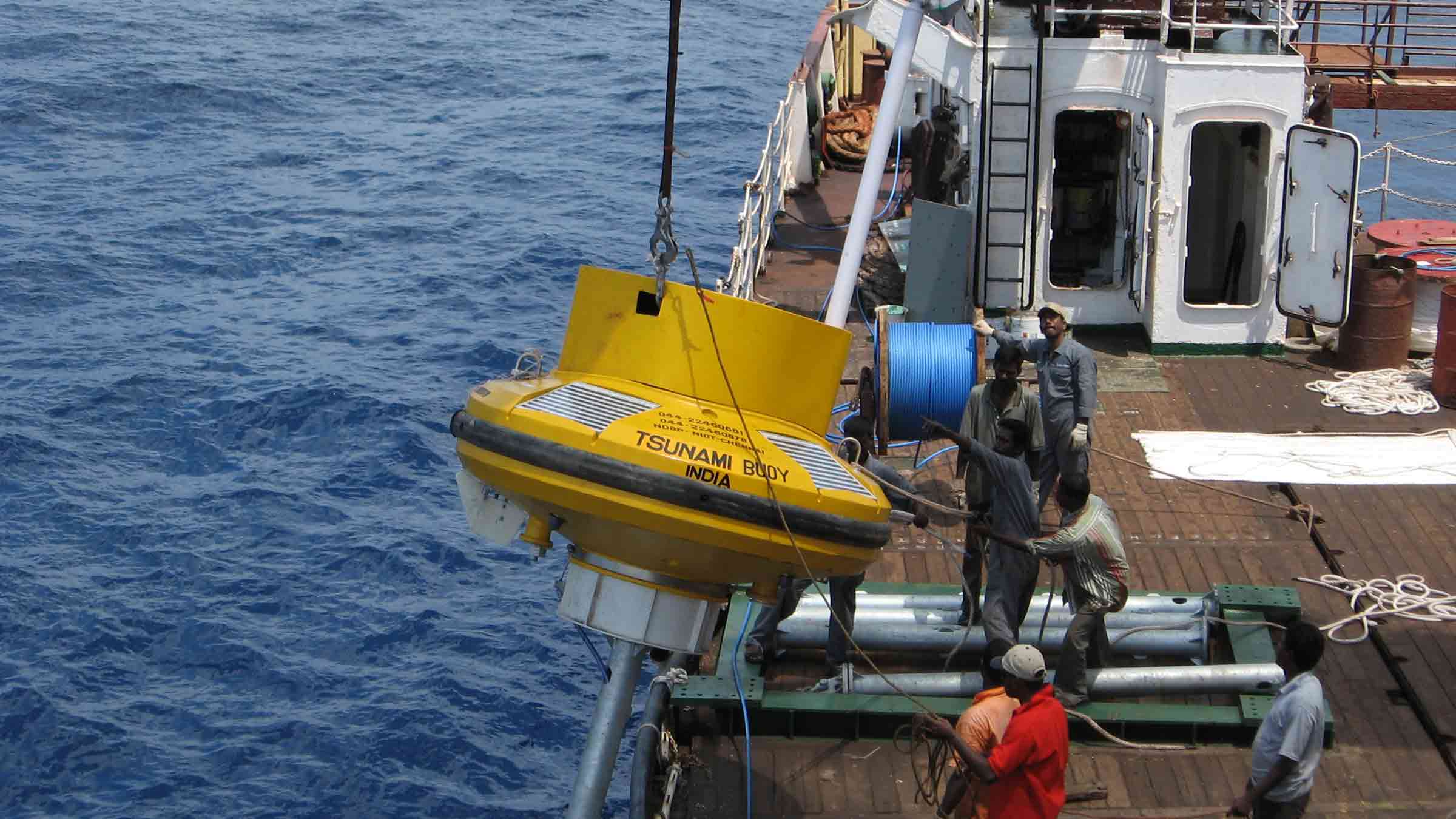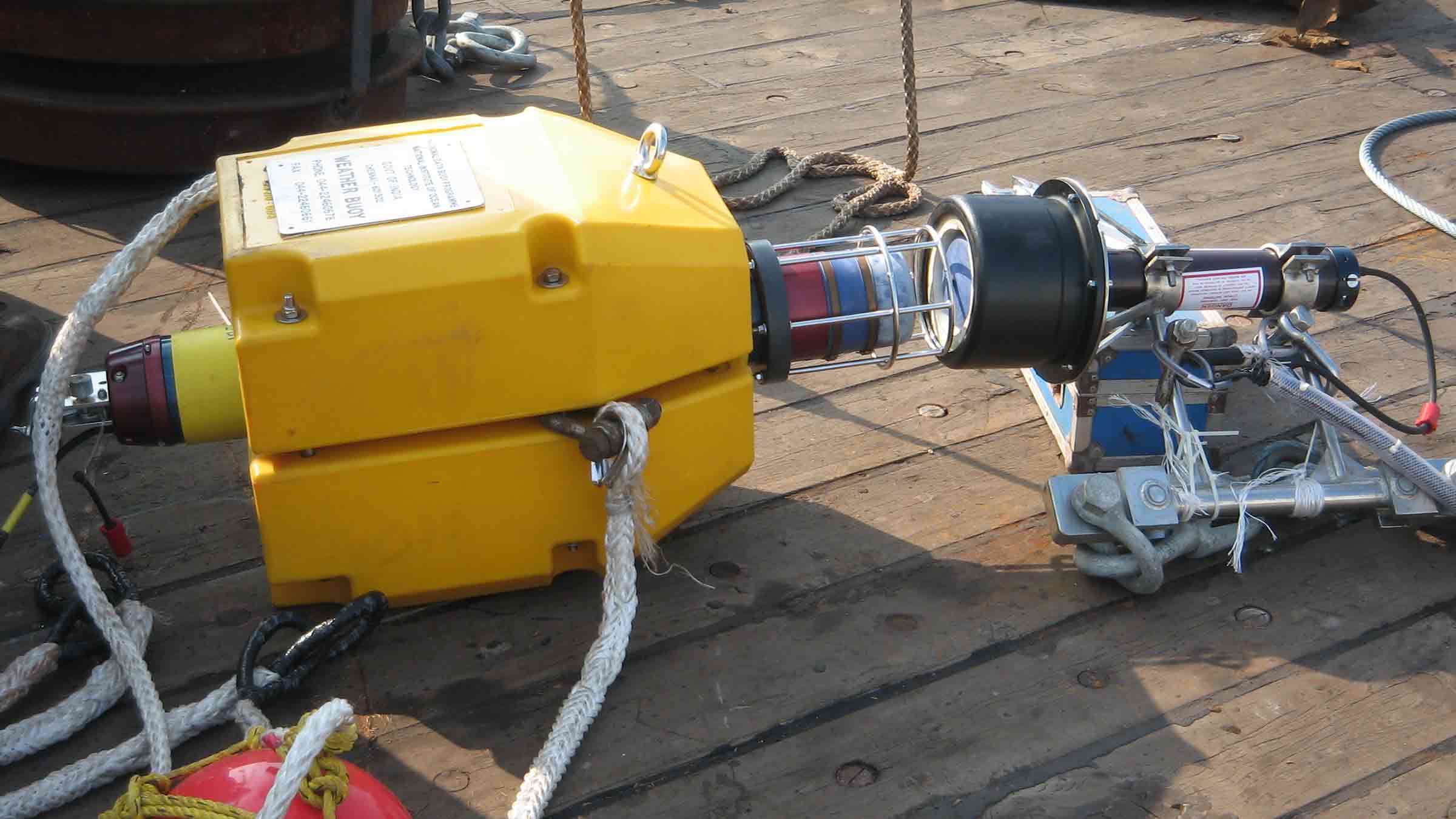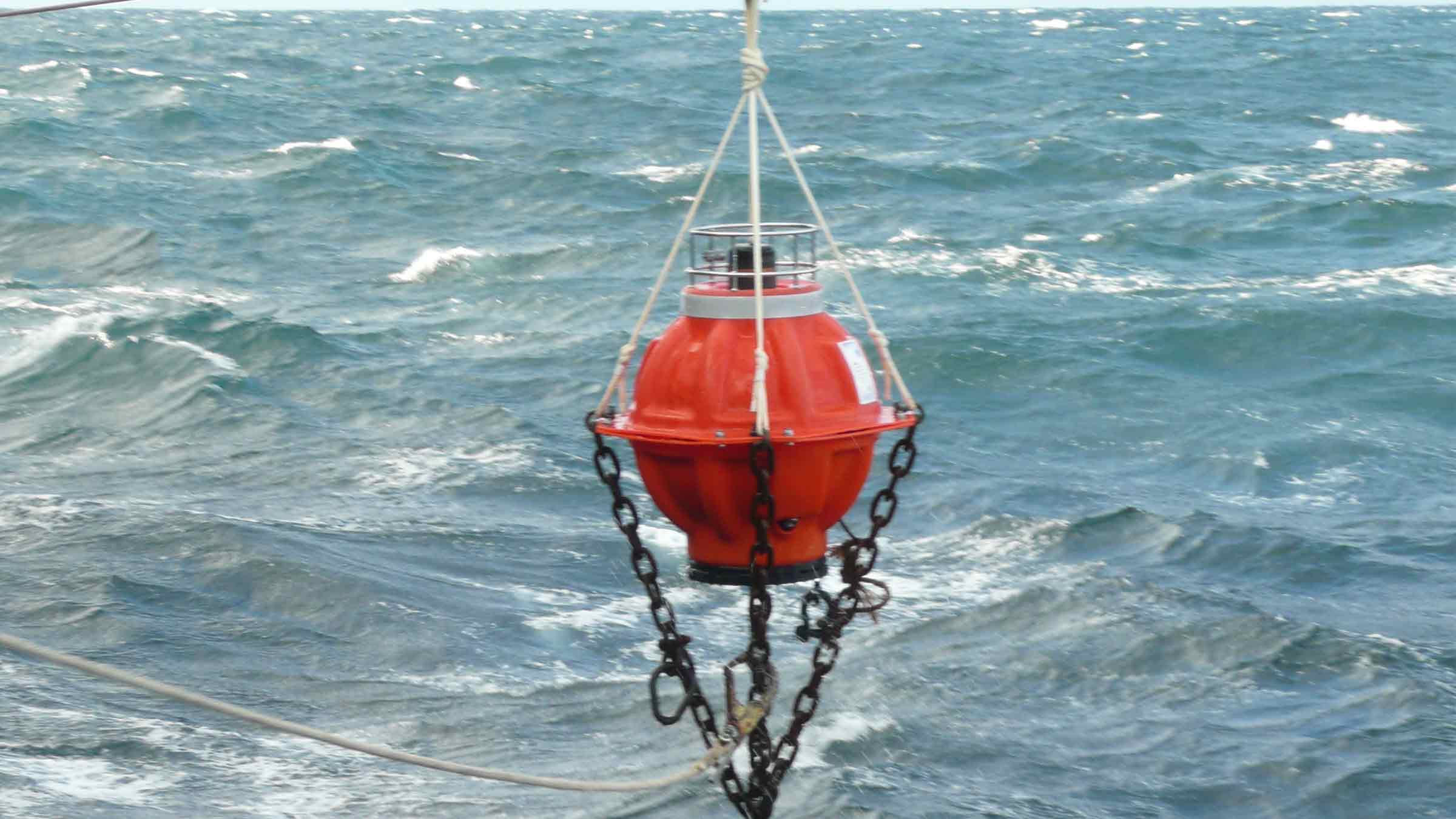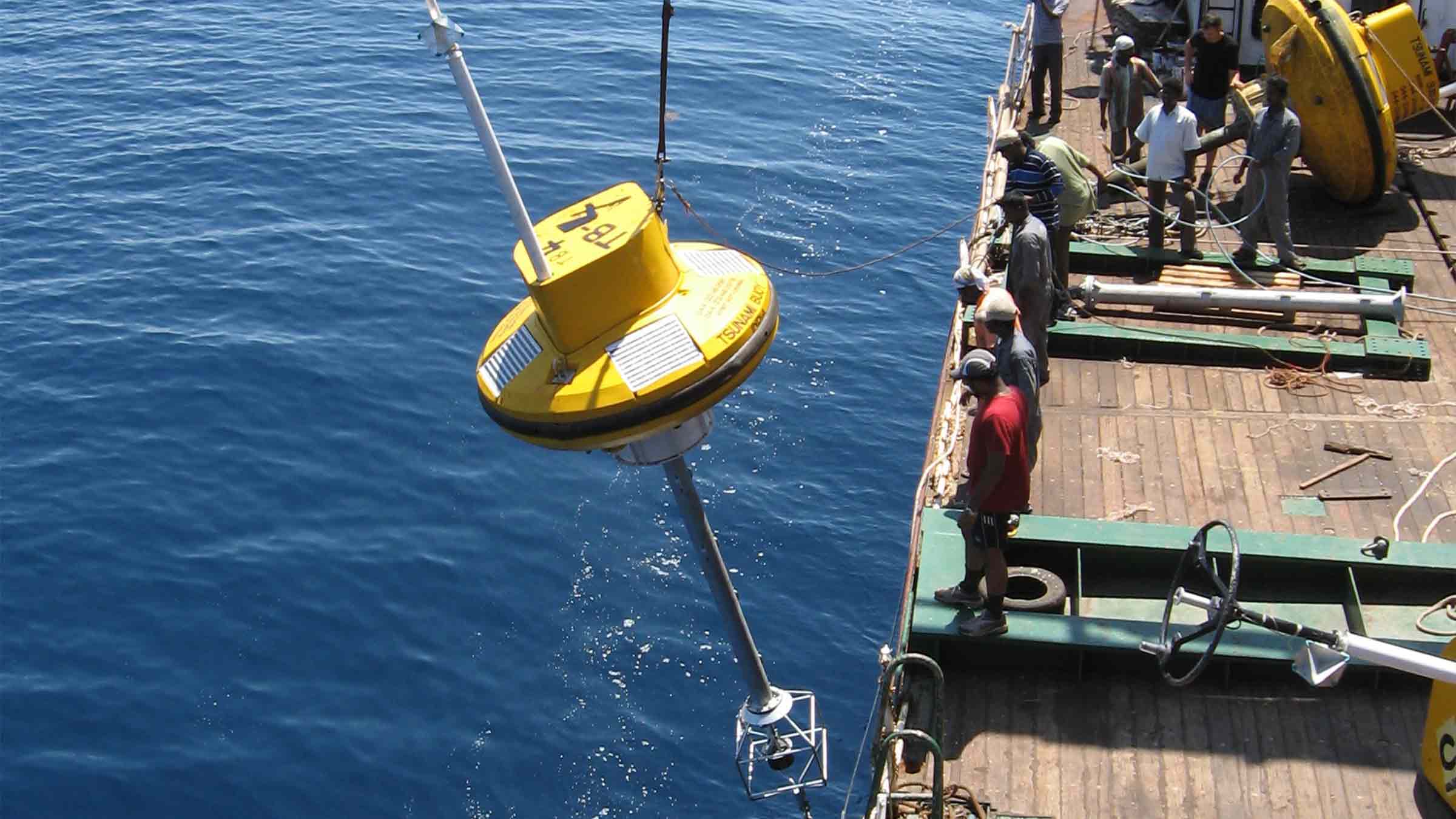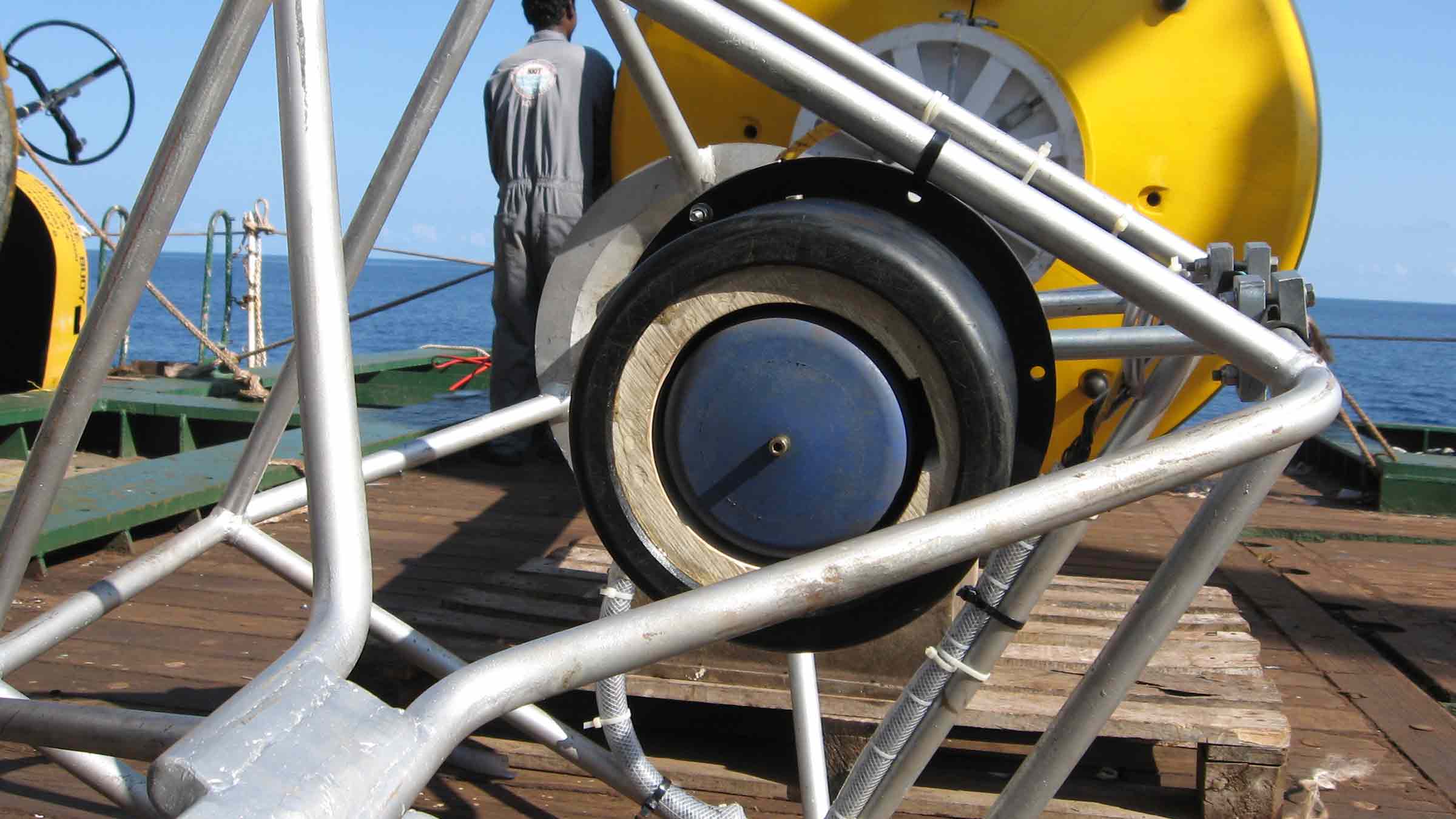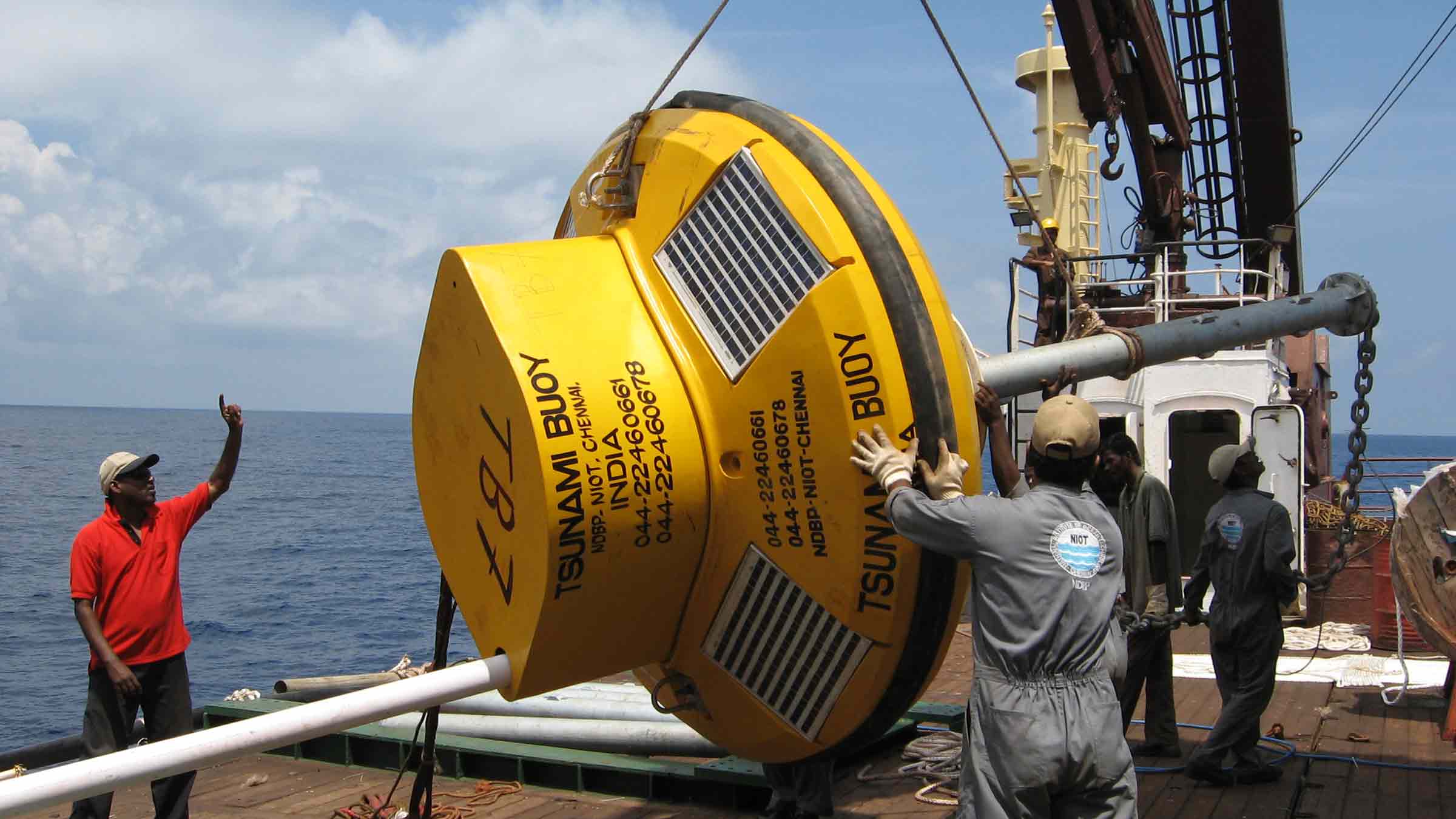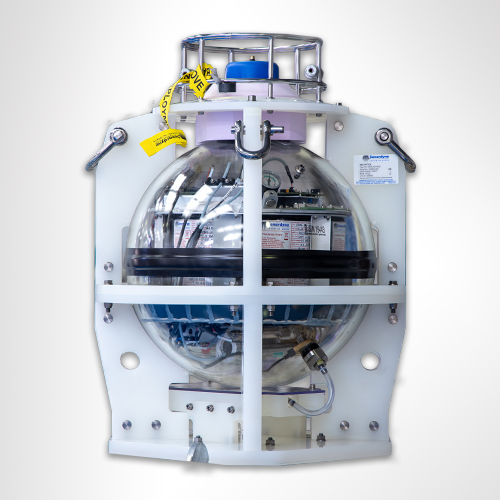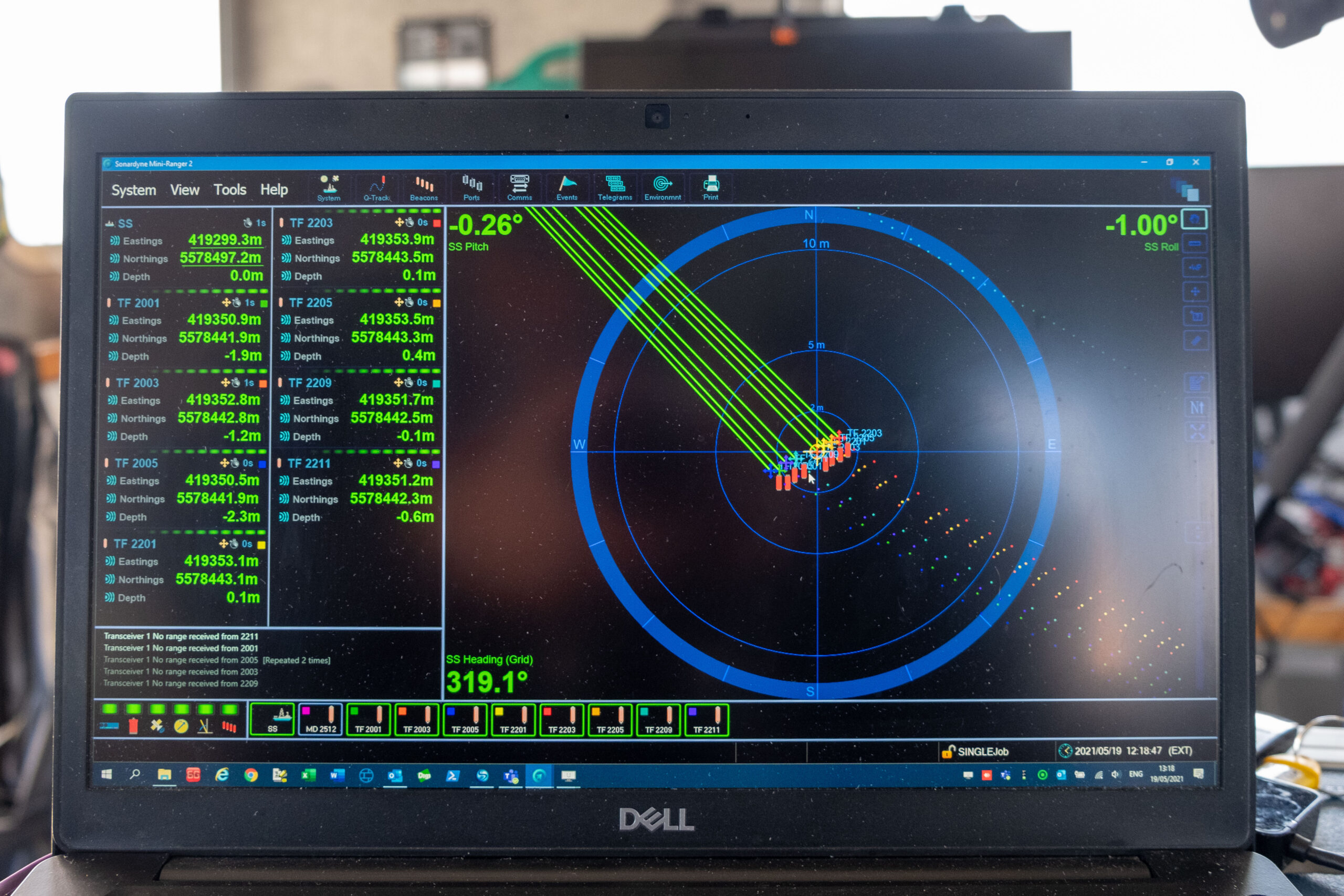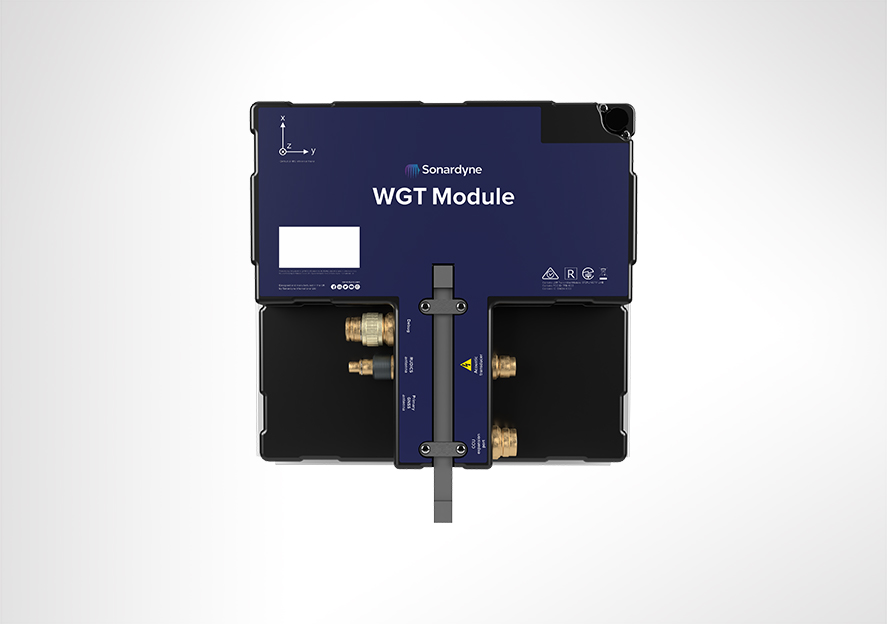Tsunami detection system
Measuring the shortest change, to give the longest warning – how it works
A tsunami wave in deep water creates a small (a little as 3 cm) but measurable change in pressure that can be maintained in excess of 20 minutes.
The sensitive pressure sensor in the BPR detects the small, but continuous change in water pressure, which triggers transmission of a series of warning messages to a surface buoy moored above it. This means that the first message warning of a tsunami, caused by a small variation in water pressure on the seabed thousands of miles from shore, can be in the office of the monitoring organisation within minutes, if not seconds.
The Tsunami Early Warning System (TEWS), developed by MSM Ocean and Sonardyne, centres around a sophisticated Bottom Pressure Recorder (BPR) deployed on the seabed. This modified Compatt 6 transponder works in conjunction with a surface buoy and onshore control centre to create a comprehensive tsunami detection network.
The BPR operates at depths up to 7,000 m and features impressive longevity, running for four years on standard power or up to nine years when housed in a glass sphere configuration. Operating in the LMF band (14-20 kHz), the device samples water pressure every 15 seconds and typically transmits data hourly to the surface. The system is compatible with various surface transceivers, including our Ranger 2 USBL system.
The detection process is both sensitive and precise. The BPR can identify pressure changes as small as 3 centimetres, using the NOAA DART® algorithm to compare measured pressure against predicted values. When two consecutive variations exceed the preset threshold (typically 3cm), the system enters alert mode. Data is then transmitted acoustically to the surface buoy, which relays the information via dual Iridium satellites to the shore. This entire alert process takes only minutes to complete.
System management is streamlined through the NETCOM-TS web application, which provides comprehensive control and monitoring capabilities. The data is shared with NOAA’s National Data Buoy Center, ensuring broad distribution of critical warning information. The system can be configured remotely, and maintenance is straightforward thanks to an acoustic release mechanism that allows for simple recovery and redeployment. Unlike some competing systems, this solution requires no underwater cables, making it particularly reliable and easy to maintain.
This integrated system serves as a crucial link in the chain of tsunami detection and warning, providing coastal communities with vital advance notice of potential threats. By combining robust hardware with sophisticated detection algorithms and seamless communication protocols, the system delivers a dependable early warning solution that can save lives and property in vulnerable coastal areas.
At a glance
- All-in-one wireless solution for detecting tsunamis; no fixed sea-to-shore infrastructure required
- Detects height variation on the water surface as small as 1 mm; a change of 3 cm launches a tsunami event (tsunami alert)
- Generates Deep-ocean Assessment and Reporting of Tsunamis (DART®) warnings which can be received onshore within seconds of a confirmed tsunami event
- Low cost of ownership; COTS technology with long service intervals
- IALA compliant buoy for increased safety of the system to guarantee availability
- Remote monitoring and control for ease of operation
- Intuitive shore control interface using MSM Ocean’s NETCOM-TS software
Why choose Sonardyne & MSM?
Easy ownership
Our warning system is commercial-off-the-shelf, can be acquired easily, delivered in short timescales and commissioned without any significant national investment in, or construction of, sea-to-shore infrastructure.
It’s integrated
Competing warning systems are often made up of individual sensors, battery packs and modem with vulnerable connectors and cables. Together with MSM Ocean, we provide a one-stop shop solution that’s rugged and robust.
It’s proven
The system’s built using proven, high security wireless seabed to shore monitoring and communications technology, with proven performance in detecting tsunamis.
Seabed to surface communications (Sonardyne)
• Long range for deep water deployment far offshore; 19-34kHz frequency band
• Advanced protocols to minimise data loss and re-sends
• Directional transducer for optimised seafloor-to-surface communications
• 100 – 900 baud user payload, bi-directional
• Powered by 6G and Wideband 2 technology: in use globally within science, energy and defence
Surface to shore communications (MSM Ocean)
• Uses the Iridium low earth orbit (780 km) constellation of polar orbiting satellites
• Incorporates dual modems and antennas for redundancy
• NETCOM-T software web application enables remote management of the tsunami buoy and BPR from Shore Control Centre
BPR Design (Sonardyne)
• Robust all-in-one design; compact, integrated, self-powered, no cables to get damaged
• Easy to deploy; standard depth rating of 5,000 m (option for 7,000 m)
• Integrated release mechanism for simple recovery of seabed BPR for servicing
• 2 year battery life typical; up to 10 years possible with alternative design of BPR
• Simple to integrate surface transceiver on instrumented buoy (solar and communications)
Tsunami Buoy (MSM Ocean)
• Suitable for deployment in depths of up to 4,000 m
• IALA compliant topmark, lighting with 5 NM luminous range
• Aluminium superstructure with a 2.4 m diameter shock-resistant closed-cell polyethylene foam float and stainless-steel tail
• Multiple safety and anti-vandalism measures fitted as standard: GPS out of position alarm, unremovable solar panels, impact sensor, intrusion sensor
A typical TEWS configuration (Per monitoring location)
• Seafloor deployed BPR transponder and floatation, 5,000 m rated, 2 year battery life. Sonardyne iWand back-deck and workshop test and configuration device
• Moored, IALA-compliant communications buoy equipment equipped with sub-surface acoustic transceiver, power, navigation safety aids and redundant satellite communications gateway
• MSM Ocean command and configuration software used to remotely control and monitor the TEWS and issue alerts
Ownership
• Warranty: 1 year return to Sonardyne MSM Ocean service centre
• Training: onsite or remote operator and maintainer training required
• ITAR Controlled: No
• UK Export Licence: Not required
Specifications
| Feature | Type 8141 Buoy Mounted Transceiver | Type 8142-000-02 Buoy Mounted Transceiver |
|---|---|---|
| Frequency Band | LMF (14–19 kHz) | LMF (14–19 kHz) |
| Transducer Beam Shape | Directional | Directional |
| Transmit Source Level (dB re 1 µPa @ 1 m) | 196–172 dB (3 levels) | 196–172 dB (3 levels) |
| Receive Sensitivity (dB re 1 µPa) | 95–130 dB (6 levels) | 95–130 dB (6 levels) |
| Telemetry (Wideband 2) | 100–900 baud, user payload, bi-directional | 100–900 baud, user payload, bi-directional |
| Sonardyne Messaging Service (SMS) data buffer | 128 bytes | 128 bytes |
| Command/Control | Accessed through communications interface | Accessed through communications interface |
| Error Detection and Correction | Advanced protocols to minimise data loss and re-sends |
Advanced protocols to minimise data loss and re-sends |
| Communications Interface | RS232 (9,600–115,200 baud) | RS232 (9,600–115,200 baud) |
| Dimensions (Length x Diameter) | 608 x 260 mm | 608 x 260 mm |
| Weight/Mass | 9.75 kg (weight in water) 5.26 kg (weight in air) |
9.75 kg (Weight water) 52 N (mass) |
| External Power Requirement | 24–50 V dc, 1 W quiescent, 100 W peak |
24–50 V dc, 1 W quiescent, 100 W peak |
| Armoured Cable to buoy Payload | Included (10 m, 8-core, with strain relief) | Included (10 m, 8-core, with strain relief) |
| Feature | Type 8303 Bottom Pressure Recorder 6 | Type 8303-6226 Bottom Pressure Recorder 6 |
| Depth Rating | 5,000 m (4,100 and 7,000 m option) | 6,000 m |
| Frequency Band | LMF (14–19 kHz) | LMF (14–19 kHz) |
| Transducer Beam Shape | Directional | Directional |
| Transmit Source Level (dB re 1 µPa @ 1 m) | 202–169 dB (5 levels) | 202–169 dB (5 levels) |
| Receive Sensitivity (dB re 1 µPa) | 80–120 dB (6 levels) | 80–120 dB (6 levels) |
| Telemetry (Wideband 2) | 100–900 baud, user payload, bi-directional | 100–900 baud, user payload, bi-directional |
| Battery Life (Monitoring) | 725 days standard (1,450 days maximum option) | 1,450 days |
| Working Load Limit (4:1) (Release) | 250 kg | 250 kg |
| Dimensions (Length x Diameter) | 1,100 x 200 mm | 1,667 x 200 mm |
| Weight/Mass | 28.2 kg (weight in air) 14.2 kg (weight in water) (standard 5,000 m option) |
49.5 kg (weight in water) 235 N (mass) |
| Pressure Sensor | 4,100 m (7,000 m option) | 6,800 m range |
| BPR Floatation Collar | Included (nett buoyancy 300 N) |
n/a |
| Feature | Floatation for Bottom Pressure Recorder 6 | |
| Depth Rating | n/a | 6,000 m |
| Dimensions (Diameter) | n/a | 857 mm |
| Weight/Mass | n/a | 211 kg (weight in water) 760 N (mass) |
